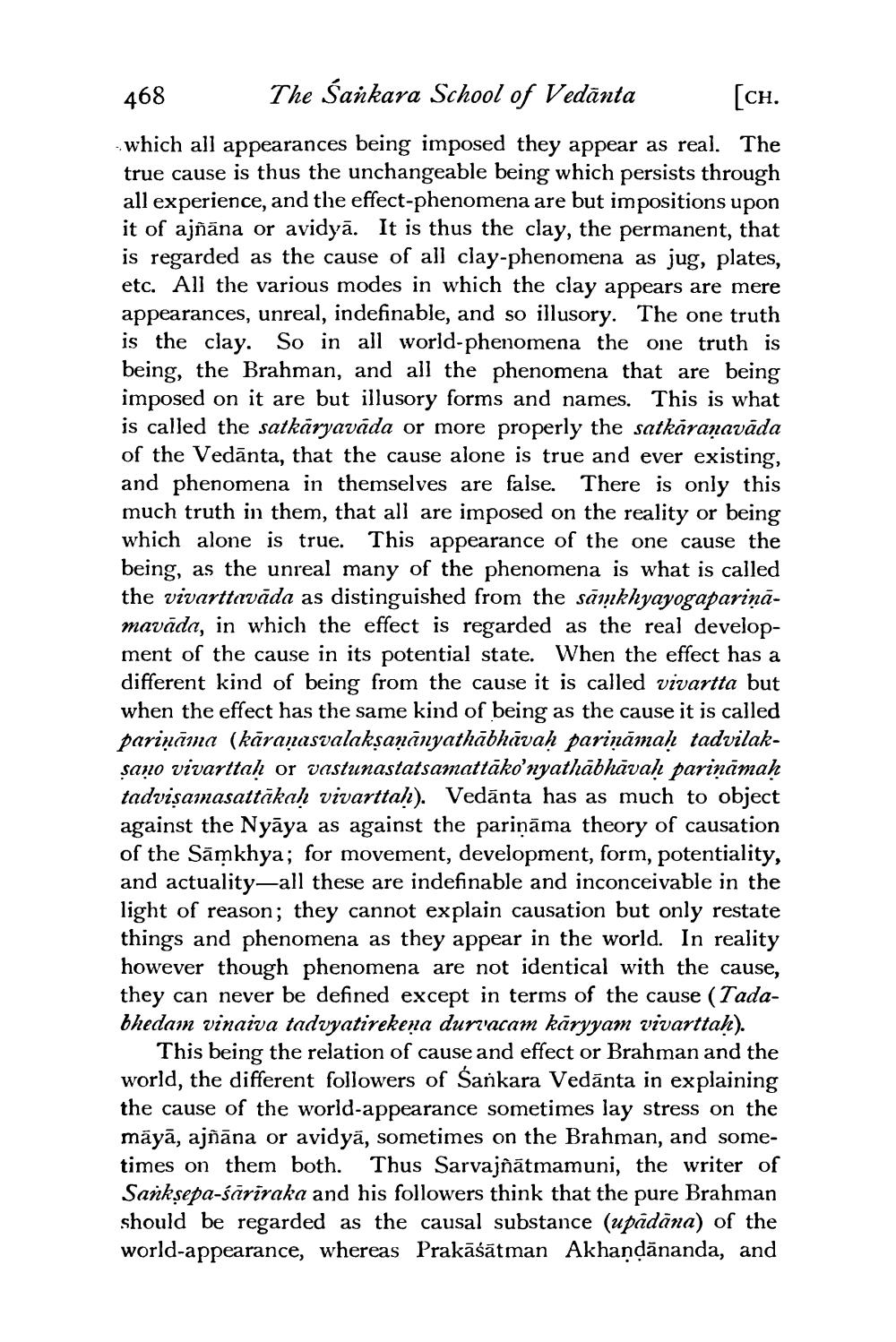________________
468
The Sankara School of Vedanta
[CH.
which all appearances being imposed they appear as real. The true cause is thus the unchangeable being which persists through all experience, and the effect-phenomena are but impositions upon it of ajñāna or avidyā. It is thus the clay, the permanent, that is regarded as the cause of all clay-phenomena as jug, plates, etc. All the various modes in which the clay appears are mere appearances, unreal, indefinable, and so illusory. The one truth is the clay. So in all world-phenomena the one truth is being, the Brahman, and all the phenomena that are being imposed on it are but illusory forms and names. This is what is called the satkaryavada or more properly the satkaraṇavāda of the Vedanta, that the cause alone is true and ever existing, and phenomena in themselves are false. There is only this much truth in them, that all are imposed on the reality or being which alone is true. This appearance of the one cause the being, as the unreal many of the phenomena is what is called the vivarttavada as distinguished from the samkhyayogapariņāmavada, in which the effect is regarded as the real development of the cause in its potential state. When the effect has a different kind of being from the cause it is called vivartta but when the effect has the same kind of being as the cause it is called pariņāma (kāraṇasvalakṣaṇānyathābhāvaḥ pariņāmaḥ tadvilaksano vivarttaḥ or vastunastatsamattāko’nyathābhāvaḥ parināmaḥ tadviṣamasattākaḥ vivarttah). Vedānta has as much to object against the Nyaya as against the parināma theory of causation of the Samkhya; for movement, development, form, potentiality, and actuality-all these are indefinable and inconceivable in the light of reason; they cannot explain causation but only restate things and phenomena as they appear in the world. In reality however though phenomena are not identical with the cause, they can never be defined except in terms of the cause (Tadabhedam vinaiva tadvyatirekena durvacam kāryyam vivarttaḥ).
This being the relation of cause and effect or Brahman and the world, the different followers of Sankara Vedanta in explaining the cause of the world-appearance sometimes lay stress on the māyā, ajñāna or avidya, sometimes on the Brahman, and sometimes on them both. Thus Sarvajñātmamuni, the writer of Sankṣepa-sariraka and his followers think that the pure Brahman should be regarded as the causal substance (upadana) of the world-appearance, whereas Prakāśātman Akhaṇḍānanda, and




